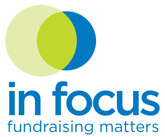Recent Posts
- Navigating 2024’s Unique Year-End Fundraising Landscape
- Latest Giving USA Data
- How to Flex Your Case for Support to Raise More Money
- Maximizing Potential of Donor-Advised Funds: Strategies You Need To Know
- Major Donors: Cultivating Relationships & Forging Strong Ties
- On Assignment in an Interim Development Role
- Planning with Intention
- Using Metrics to Understand Your Email Impact (Part 2)
Maximizing Potential of Donor-Advised Funds: Strategies You Need To Know
Published: May 21, 2024
In the ever-shifting world of fundraising, donor-advised funds (DAFs) have become a key tool for donors to manage their charitable giving, providing a flexible and tax-efficient way for individuals to support causes they care about. As a nonprofit fundraiser, it’s vital to understand how to leverage DAFs to enhance your efforts and amplify your organization’s initiatives. Drawing insights from a recent article by Lisa Schohl in the Chronicle of Philanthropy, "9 Ways to Raise More From Donor-Advised Funds," below are tips to optimize DAF contributions and cultivate these donor relationships.
Include DAF’s in your messaging all year long.
Just like including monthly or planned giving in your fundraising messaging, you’ve got to regularly include giving via DAFs when you communicate so that donors know this is an option in giving to you. Whether that means mentioning DAFs in your newsletter or adding a DAF widget to your website (we like this one we like, offered by DAF Direct), you’ve got to make sure your donors know they can use their DAF with your organization. And, while it’s important to share this all year long, you definitely want to highlight DAF giving in your year-end messaging.
Play detective with your DAF data.
Some DAF distributions come with little information. Technically, the “donor” is the financial institution which made the gift after receiving a recommendation from the fund holder(s), and they don’t have to include donor details. So, each time you receive a gift with few details,connect with the financial institution/sponsoring organization. While some may not share the donor information, some will. It’s worth putting on your sleuthing hat and inquiring about who gave the contribution so that you can start to build a relationship with that donor.
DAF donors can become big donors.
We suggest that all of our clients consider a DAF gift to be coming from a potential major donor. This means prompt and robust acknowledgment, special invitations, and a call to the donor to share details on your work and programs. Just like with any major donor prospect, initially you want to focus on building and maintaining a connection and understanding what is motivating them to support you.
DAF holders could be potential planned gift donors.
As you’re updating language about planned gifts online and in your direct mail/email communication, be sure to include DAFs in your messaging. Your current donors may see that you accept DAF donations easily and decide they prefer to give that way, while others may be prompted to include a distribution from their DAF account in their estate planning. Either way, it’s a win to share DAF giving details widely.
Get to know those who work at DAF-sponsoring organizations.
Whether it’s your area community foundation, Fidelity, Schwab or other institutions, it is helpful to connect with those on the inside as they may be in a position to recommend charities to their account holders or be willing to make an introduction. So, make sure to attend events sponsored by or attended by these organizations, or look through your Linked In and reach out to make connections and expand your network.
Just as giving shifted from direct mail or in-person asks to mail + email + social media + video fundraising and 7-figure asks via video call, the addition of DAFs represents another dynamic and increasingly prevalent vehicle for giving. For nonprofits, tapping into the full potential of DAFs requires a strategic approach that prioritizes engagement, communication, and follow-through.
As you are implementing the actionable strategies outlined here, you’ll be expanding your fundraising and forging stronger ties with donors to achieve your mission. As you do this work, let me know how your DAF engagement and outreach is going by sending me a note here!
